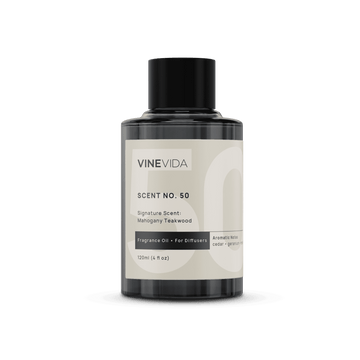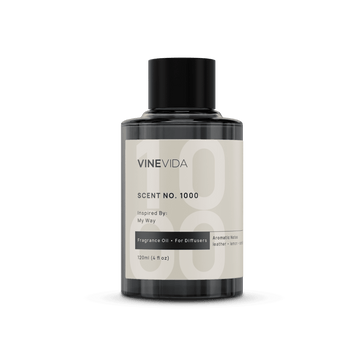Lavender has been used to promote sleep since at least the times of the ancient Greeks. Complementary medicine research backs up claims that lavender reduces symptoms of stress, reduces anxiety, and aids sleep. Today we’ll look at some ideas on how to use lavender oil for sleep.
Essential oils absorb through the skin and into the bloodstream, then circulate to the part of the body that needs them. Inhalation also speedily takes molecules to the brain to act on the hypothalamus that controls the sleep-wake cycle. Add lavender to your bath, into diffusers, massage blends, and lotions to soothe and calm the body. Let’s explore exactly how to do each one in turn.
Where Do I Apply Lavender Oil To Relax?
You can apply essential oils anywhere and they will circulate them to where you need them, but diluted essential oils are best rubbed into the back of the neck and shoulders to give the oils speedy access to the brain stem. Alternatively, if you apply them to the insides of the wrist, where there is a good blood supply, this can be very helpful too.
We recommend a 3% dilution.
For the first week, apply the oils as often as you remember them. As many as five times a day is ideal. Don’t worry about overdosing on them. The body takes what it needs and then excretes the rest as urine.
After the first week, drop down to using them just in the evenings, as and when you need them.
Understanding How To Use Lavender Oil For Sleep

One of the best ways to improve sleep quality is to understand the system that you are trying to influence. The part of your brain that governs the sleep-wake cycle is the hypothalamus. This cluster of nerve cells plays a vital part in the body’s stress response protocol.
Imagine that you are a caveman who is being stalked by a saber tooth tiger. This might seem extreme, however, our bodies seem not to have evolved ways to move past this response, so it works quite well.
Your mind is fully aware you are being stalked, so you become hypervigilant. This is because of a little almond-shaped part of your brain called the amygdala. The amygdala recognizes and registers fear. Its job then is to send information about this fear to the hypothalamus - remember this is the bit of the brain we are interested in.
The hypothalamus then sends out instructions to the pituitary gland, which instructs hormones to work in a different way, and to the adrenals to secrete stress hormones like adrenaline or cortisol.
Now, the important thing to remember is that as long as the body is fearful, it will continue to send information to the hypothalamus to keep signaling fear to the other glands. The most important of these messages is “Please don’t go to sleep. That tiger is stealthy even when he’s hungry..”
How to Use Lavender Essential Oil Mindfully?
Now, as long as the amygdala thinks there is a tiger, we have problems. We do have a weapon in a part of the brain called the Ventromedial Prefrontal Cortex (VmPFC) which is like a long-suffering best friend to the amygdala, continually reassuring her and telling her not to worry. Where the hypothalamus heads up Fight and Flight processing, the VmPFC is in charge of “Rest and Restore - the parasympathetic system. It’s her job to switch the response off. The problem is that sooner or later, she’s had enough. The amygdala’s not listening, so what’s the point anyway. She gives up and heads off to scroll through social media. Without that response then, there can be no brain shut off for sleep and you’re left there at 3 am thinking about arguments you had back in 2009!
Lavender helps to calm the hypothalamus, re-awakens the VmPFC, and reduces stress.
What it’s important to see here is lavender can work as a long-term solution to reduce anxiety and aid sleep. It isn’t however, a one sniff and we’re snoring solution. It works best as a holistic solution.
Safety: Lavender essential oil is a safe oil with no concerns attached (as long as you avoid it in the first 16 weeks of pregnancy).
How Do You Dilute Lavender Oil For Sleep?
Maximum safe dilution is 3%, which means 3 drops per 1 teaspoon of carrier oil. You can, of course, add more essential oils to the blend, if you want to, too. If you want to add three oils, and your maximum dilution is still 3% for each one (Not all oils are safe at that strength) that means you can go up to 3% for each oil.
So for example:
- 1 teaspoon Carrier oil
- 3 drops Lavender Essential Oil (Lavandula Angustifolia)
- 3 drops Geranium Essential Oil (Pelargonium Graveolens)
- 3 drops Roman Chamomile Essential Oil (Anthemis Nobilis)
Some DIY recipes of how to use lavender for sleep are enclosed at the end of the article.
Know that essential oil usage is cumulative, so the longer you use them the better their effects will be. Try not to lose heart if you don’t see effects in the first couple of days. Keep persevering.
What Is The Best Way To Use Lavender Oil?
It always seems a bit of a cop-out to say, “Which way do you like best?” But that is the truth of it. There would be no point in us advising you to bathe in it if you don’t have a bath, and not everyone is lucky enough to have a masseur on hand. The best way to use lavender is to experiment. Find out what works best for you.
If you fancy doing a really good study, you might want to do a really lovely project. Trainee aromatherapists are taught to work with one essential oil, only, for 28 days. Write down everything you learn. How it makes you feel, what thoughts it brings to mind. It’s amazing how much essential oil can teach you about your feelings and thought processes. You never know, you might even get to find out what’s at the root of your sleeplessness as well as get a better night’s sleep.
How To Use Lavender Oil For Sleep - Diffusers?
Healthy sleepers don’t happen by accident. A trial done by the University of Minneapololis demonstrated the importance of good sleep hygiene but also proved that sleep hygiene can be enhanced by using Lavender Oil.
The subjects were divided into two groups. Both practiced good sleep hygiene and wore inhalation patches before they went to bed for two weeks. The control group had a blank patch. Both groups enjoyed a better quality of sleep, but the lavender group's sleep was significantly improved.
Some tips for good sleep hygiene would be to turn off gadgetry and screens a good hour before bed. Avoid caffeine. Have a warm drink and bath. Burn some lavender in a diffuser in the evening.
It may be interesting to note that there are several stages of sleep. As we pass through REM into slow brain waves, several processes are closed down to allow the parasympathetic system to help our bodies rest and restore. One of the processes that switch off is our sense of smell, which is why smoke alarms are so important.
For that reason then, it makes more sense to pop a couple of drops of lavender oil onto our pillows (the underside is fine if you find the smell stifling) Turn off diffusers when you go to bed and preserve energy.
One note, people will often suggest using lavender oil for sleepless nights with newborns. If this is you, please check out our post: is lavender essential oil safe for babies?
Spoiler alert. It is safe, but you need to use a slightly different approach.
How To Use Lavender Oil For Sleep - Baths?
When we lie in a warm bath we expose our system to a unique opportunity. As we fall into the water's embrace, our muscles relax and our skin opens our pores.
Our skin is our largest organ. At the root of each hair follicle is a pore. These make the skin semipermeable. They allow fluids out in the form of sweat and then absorb certain types of fluids, like essential oils through a process of osmosis.
Thus, as they open in response to the warmth, approximately five million little doorways open to let the lavender in. Academic researchers believe it takes around 19 minutes for this to fully take place. So you're going to need to lie in the bath for about twenty minutes at least.
Simultaneously though, something else is going on in the background. As you inhale the aromatic molecules, they head for a small piece of tissue at the back of the nose. The olfactory bulb has around 100,000 receptors that take information about the scent, then transport it to the part of the brain that registers emotions, the limbic system. This primitive part of the mind is also responsible for learning, cognition, and memory. It encompasses the amygdala, hippocampus, and hypothalamus. Hopefully, you just had an a-ha moment about how it will switch wakefulness off, and allow you to drift off to calming sleep.
The olfactory process is speedy. We recognize fragrances almost immediately, but in about five minutes the vapors from the bathwater will begin to soothe.
There are recipes at the end of this article, but always remember that oil and water do not mix. If you do not add your essential oil to a carrier, it is to all intents and purposes undiluted on the top of the bath.
How To Use Lavender Oil For Sleep - Massage?
Depending on where you live in the world, massage has different levels of importance. In the US we tend to be mostly into diffusers and rollerball applications. In Britain, massage stands front and center of aromatherapy.
There are different types of massage. Most people recognize the cupping and hacking of deep tissue massage or recognize the term Swedish Massage. These two can encompass essential oils of course to improve the therapy, but an aromatherapy massage is simply long slow relaxing strokes. The technical name for this is enfleurage. The purpose of the massage is purely to employ the soothing sense of touch and to administer the oils onto the body.
Clearly, the essential oils are always in a carrier oil for this, not only to dilute them for safety but also to make them slip and glide further.
Most sites will suggest something like fractionated coconut but there are far lovelier ones to experiment with. Rapeseed gives gorgeous slip (that makes it seem like less work for the masseur, almond is thicker and more cosseting and luxurious. But take a look at some of the carrier oils in the Vinevida range. There is such diversity in them, and you may find them even more exciting than essential oils. Personally, we love avocado and rosehip oils that make the skin feel deliciously nourished and soft.
How To Use Lavender Oil For Sleep - Creams?
Very simply, choose an unscented lotion, or most aromatherapists would use aqueous cream bought from the pharmacy.
It is great blended with marjoram to support the central nervous system and help restore and maintain healthy sleep patterns. Apply it to the back of your neck, or the insides of your wrists, about five times a day for a week, especially before bedtime.
DIY Recipes Of How To Use Lavender Oil For Sleep
Bath Oil
- 1 teaspoon Grapeseed Carrier Oil (Vitus Vinifera)
- 3 drops Lavender Essential Oil (Lavandula Angustifolia)
- 3 drops Valerian Essential Oil (Valeriana Officinalis)
- 2 drop Mandarin Essential Oil (Citrus Reticulata)
Safety: Not suitable for use in the first 16 weeks of pregnancy. Be careful how you get out of the bath. Oil makes it very slippery.
Massage Oil
- 1 tablespoon Grapeseed Carrier Oil (Vitis Vinifera)
- 10 drops Rosehip Carrier Oil (Rosa Canina)
- 5 drops Lavender Essential Oil (Lavandula Angustifolia)
- 2 drops Ylang Ylang Essential Oil (Cananga Odorata)
- 1 drop Vetiver Essential Oil (Vetiveria Zizanoides)
Conclusion
There is no one size fits how to use lavender oil for sleep. Combine several methods, consider swapping out the caffeine for chamomile tea, get to bed at a sensible time and turn off the gadgetry at least an hour before bed. All that remains now for us to do, is to wish you sweet dreams and a long and happy sleep time.















